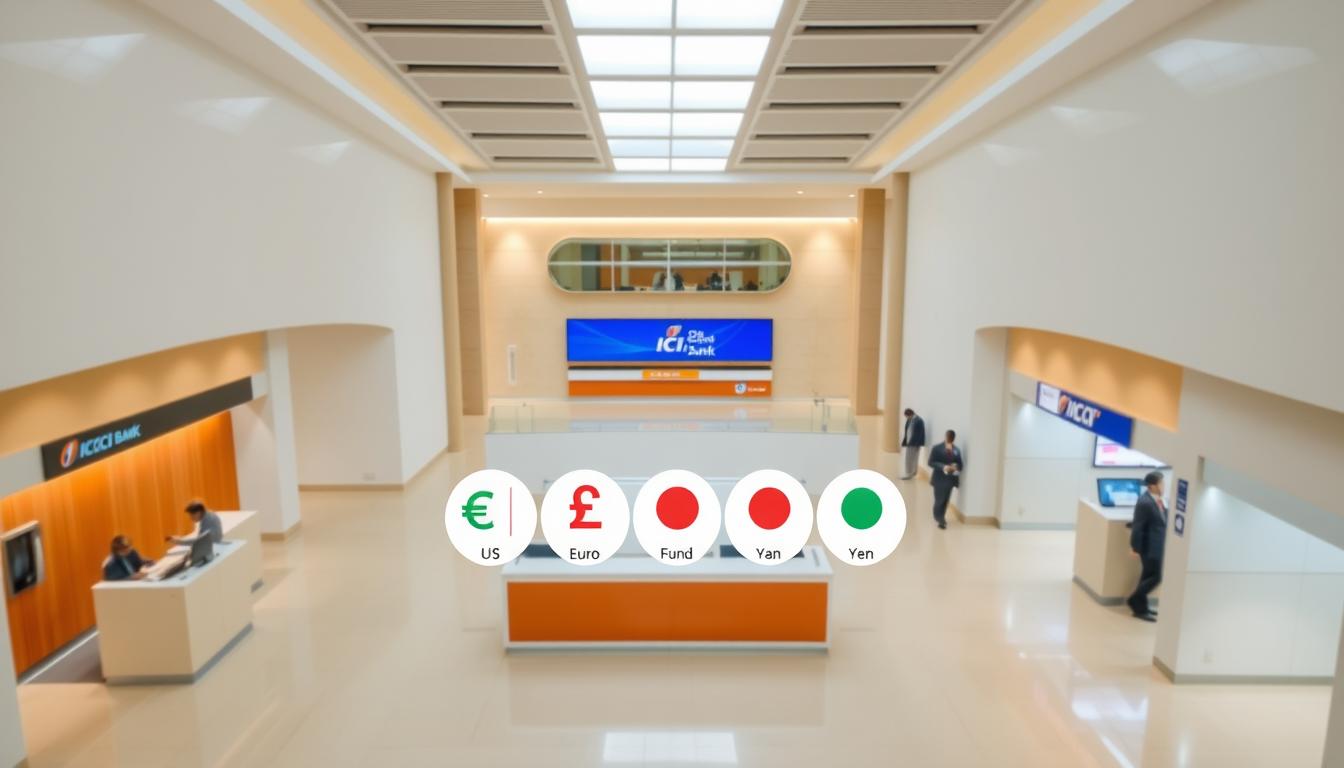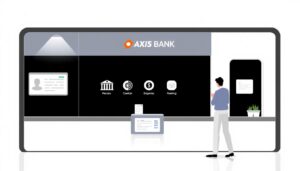Did you know that India received over $100 billion in remittances in 2022, making it the largest recipient globally? This highlights the growing importance of efficient cross-border money transfers. For individuals and businesses, understanding the process is crucial to ensure smooth transactions.
One of the key players in this space is ICICI Bank, which simplifies international money transfers to India. By offering a range of supported currencies, it ensures that recipients receive funds without unnecessary delays or complications. This is especially important for NRIs and global citizens who rely on these services.
Compliance with RBI regulations under FEMA guidelines is another critical aspect. Knowing which currencies are supported and the transfer methods available can save time and effort. This article will explore these topics in detail, helping you make informed decisions.
Key Takeaways
- India is the world’s largest recipient of remittances, emphasizing the need for efficient transfer systems.
- ICICI Bank plays a vital role in facilitating international money transfers to India.
- Understanding supported currencies ensures faster and hassle-free transactions.
- Compliance with RBI and FEMA guidelines is essential for smooth remittances.
- This guide will cover supported currencies, transfer methods, and compliance requirements.
Introduction to ICICI Bank’s Inward Remittance Services
With a focus on digital innovation, ICICI Bank ensures seamless cross-border transactions. Its inward remittance services are designed to meet the needs of NRIs and global citizens, offering speed, reliability, and compliance with regulatory standards.
The bank’s Money2India platform is a standout feature, enabling instant transfers to any Indian bank. This service is complemented by Smart Wire, which provides online processing with real-time tracking. Together, these tools make international money transfers hassle-free.
ICICI Bank’s digital-first approach ensures high success rates and quick processing times. Statistics show that most transactions are completed within minutes, making it a trusted choice for remittances.
Compliance is another key aspect. The bank’s services are fully integrated with the RBI’s FEMA framework, ensuring all transactions adhere to legal requirements. This commitment to regulation provides peace of mind for users.
Multi-channel support is also available, including online platforms, branch services, and a mobile app. This flexibility allows users to choose the most convenient method for their needs.
- Instant transfers with the Money2India platform.
- Real-time tracking through Smart Wire.
- High success rates and quick processing times.
- Full compliance with RBI’s FEMA guidelines.
- Multi-channel support for added convenience.
Understanding Inward Remittance
Understanding inward remittance is essential for anyone involved in cross-border financial activities. It refers to the process of sending funds from overseas to India, as defined by the Reserve Bank of India (RBI) under the Foreign Exchange Management Act (FEMA). This process is vital for both personal and economic reasons, ensuring financial stability for many households.
What is Inward Remittance?
Inward remittance involves the transfer of money from a foreign country to India. The RBI permits these transactions for specific purposes, such as family support, education, and medical expenses. It is a regulated process to ensure compliance with legal frameworks and prevent misuse.
There are two main types of remittances: personal and commercial. Personal remittances are typically used for family support, while commercial remittances involve business-related payments. Both types contribute to India’s economy, but they serve different purposes and are governed by distinct regulations.
Why is Inward Remittance Important?
Inward remittance plays a crucial role in supporting Indian households, especially those with family members working abroad. These funds often cover essential expenses like education, healthcare, and daily living costs. On a larger scale, remittances significantly impact India’s GDP, contributing to economic growth and stability.
However, it’s important to note that not all uses of remittances are permitted. The RBI prohibits activities like gaming and speculative trading. Understanding these guidelines ensures that transactions remain compliant and beneficial for all parties involved.
ICICI Bank Supported Foreign Currencies for Inward Remittance
Efficient cross-border transfers depend on the availability of multiple currency options. Knowing which ones are accepted ensures faster and hassle-free transactions. This section provides a detailed overview of the currencies supported and how to use them effectively.
List of Supported Currencies
The institution accepts 15 RBI-approved currencies, making it easier for users to send funds from various countries. These include:
- USD (US Dollar)
- EUR (Euro)
- GBP (British Pound)
- CAD (Canadian Dollar)
- AUD (Australian Dollar)
- CHF (Swiss Franc)
- JPY (Japanese Yen)
- SGD (Singapore Dollar)
- AED (UAE Dirham)
- SEK (Swedish Krona)
- ZAR (South African Rand)
- SAR (Saudi Riyal)
- THB (Thai Baht)
- NZD (New Zealand Dollar)
- HKD (Hong Kong Dollar)
How to Use Supported Currencies
Using these currencies is straightforward. During transaction initiation, specify the currency type to ensure accurate processing. For example, converting USD to INR involves competitive exchange rates, ensuring recipients get the best value.
Additionally, the integration with a forex prepaid card offers flexibility. Users can reload funds in real-time, making it ideal for frequent travelers or those managing multiple currencies. This feature simplifies fund management and reduces conversion fees.
Understanding the currency-specific conversion processes and settlement times is also crucial. Most transactions are completed within minutes, ensuring timely access to funds. This efficiency is particularly beneficial for urgent transfers.
Methods of Transferring Funds to India
Transferring funds to India has become simpler with advanced digital solutions. Whether you’re sending money for personal or business purposes, understanding the available methods ensures a smooth experience. This section explores the most efficient ways to transfer money to India, including online services, wire transfers, and emerging UPI capabilities.
Online Money Transfer Services
Digital platforms like Money2India offer a hassle-free way to send funds to any bank account in India. These services are designed for speed and convenience, allowing users to initiate transactions from the comfort of their homes. Here’s how it works:
- Register on the platform and link your international account.
- Enter the recipient’s details and the amount to be sent.
- Choose the currency and confirm the transaction.
Most transfers are completed within minutes, making it ideal for urgent needs. For more details on fees and features, visit this guide.
Wire Transfers
For larger amounts, wire transfers remain a reliable option. Services like Smart Wire enable same-day settlements, ensuring timely delivery of funds. Here’s what you need to know:
- Initiate the transfer through your internet banking or bank branch.
- Provide the recipient’s account details and the purpose of the transfer.
- Track the transaction in real-time for added peace of mind.
While wire transfers may involve higher fees, their security and speed make them a preferred choice for significant amounts.
Cross-border UPI Transactions
The NPCI’s UPI corridor, currently operational in Singapore, is expanding its reach. This innovative method allows users to send funds directly to Indian UPI IDs, bypassing traditional banking systems. Key features include:
- Low transaction fees compared to other methods.
- Instant processing with minimal documentation.
- Secure authentication protocols for every transaction.
As UPI’s cross-border capabilities grow, it’s set to redefine how money is sent to India.
Comparison of Transfer Methods
| Method | Fees | Processing Time |
|---|---|---|
| Online Services | Low | Minutes |
| Wire Transfers | High | Same Day |
| UPI Transactions | Minimal | Instant |
Choosing the right method depends on your needs, whether it’s speed, cost, or convenience.
Benefits of Using ICICI Bank for Inward Remittance
Choosing the right platform for international money transfers can save time and money. ICICI Bank stands out as a trusted provider, offering a range of advantages that make cross-border transactions seamless and cost-effective. From competitive exchange rates to robust security measures, the institution ensures a hassle-free experience for users.
Competitive Exchange Rates
One of the standout features of ICICI Bank is its competitive exchange rates. The institution offers rates that are 0.5-1% better than the market average for major currencies. This translates to significant savings, especially for frequent remitters. For example, regular USD remitters can save hundreds of dollars annually by leveraging these rates.
The bank’s margin structure is designed to benefit users, ensuring they get the best value for their money. Whether you’re sending funds for personal or business purposes, this advantage makes ICICI Bank a preferred choice.
Secure and Reliable Transactions
Security is a top priority for ICICI Bank. The institution employs 256-bit encryption and two-factor authentication to protect every transaction. This ensures that your funds are safe from unauthorized access or fraud.
Additionally, the bank integrates with the SWIFT network, providing an extra layer of security. A 24/7 transaction monitoring system further enhances reliability, allowing users to track their transfers in real-time. These features make ICICI Bank a dependable option for cross-border transactions.
- Better exchange rates than competitors, saving users money.
- Advanced encryption and authentication for secure transactions.
- SWIFT network integration for added fraud prevention.
- 24/7 monitoring system for real-time tracking.
- FIRC/FIRS documentation support for tax compliance.
Exploring Alternative Solutions for Foreign Currency Transactions
In today’s global economy, managing foreign currency transactions efficiently is crucial for businesses and individuals alike. While traditional banking services provide reliable options, exploring alternative solutions can enhance flexibility and cost-effectiveness. This section delves into innovative tools like Karbon FX and how they complement existing systems.
Why Consider Karbon FX?
Karbon FX offers a modern approach to handling foreign exchange needs. Its multi-currency account solutions are ideal for frequent transactors, allowing seamless management of funds across different currencies. This reduces conversion fees and simplifies fund allocation.
One standout feature is its API integration with traditional banking platforms. This enables users to automate bulk transfers, making it a preferred choice for businesses with high transaction volumes. Compared to retail services, Karbon FX provides better scalability and efficiency.
How Karbon FX Complements Traditional Services
Karbon FX works in synergy with traditional banking services, offering a hybrid approach. For instance, users can settle INR transactions through conventional methods while leveraging Karbon FX for forex hedging. This dual strategy minimizes risks and maximizes returns.
Compliance is another key advantage. Karbon FX aligns with RBI’s FEMA guidelines, ensuring all transactions adhere to regulatory standards. This makes it a trustworthy option for both individuals and businesses.
- Multi-currency account solutions for seamless fund management.
- API integration for automated bulk transfers.
- Hybrid approach combining traditional and modern services.
- Full compliance with RBI’s FEMA guidelines.
- Enhanced flexibility and cost-effectiveness for users.
Documents and Requirements for Inward Remittance
Ensuring a smooth inward remittance process requires proper documentation and adherence to guidelines. Whether you’re an individual or a corporate entity, having the right paperwork is essential to avoid delays or rejections. This section outlines the necessary documents and steps to complete the process efficiently.
Essential Documents
To initiate an inward remittance, you’ll need the following documents:
- Passport: A valid passport is mandatory for identity verification.
- PAN Card: Required for transactions above a specified amount, as per regulatory norms.
- A2 Form: This form is used to declare the purpose of the remittance.
- Purpose Declaration: A clear statement explaining the reason for the transfer, such as family support or education.
For corporate remitters, additional documents like incorporation certificates and authorization letters may be required. Always verify the terms conditions to ensure compliance.
Steps to Complete the Process
Here’s a step-by-step guide to completing the inward remittance process:
- Gather Documents: Ensure all required documents are ready and up-to-date.
- Initiate Transaction: Use your bank account or savings account to start the transfer through the designated platform.
- Submit Details: Provide accurate recipient and transaction details to avoid errors.
- Track Progress: Monitor the transaction status through the bank’s online portal or mobile app.
- Receive FIRC: The Foreign Inward Remittance Certificate (FIRC) is issued within three working days, confirming the transaction’s completion.
Digital submission through the iMobile app simplifies the process, allowing users to upload documents and track transactions in real-time. Understanding common rejection reasons, such as incomplete paperwork or mismatched details, can help resolve issues quickly.
By following these steps and ensuring all documents are in order, you can complete the inward remittance process seamlessly and efficiently.
Conclusion
Navigating international money transfers requires a reliable and efficient partner. ICICI Bank stands out with its seamless services, offering a wide range of supported options and robust regulatory compliance. Whether you’re sending funds for personal or business needs, its digital-first approach ensures speed and security.
Looking ahead, the expansion of cross-border UPI capabilities promises even greater convenience. For frequent remitters, businesses, or individuals, choosing the right platform can make all the difference. ICICI Bank remains a trusted choice, combining innovation with customer-centric solutions.
Ready to simplify your international transactions? Explore banking options today and experience hassle-free transfers tailored to your needs.







